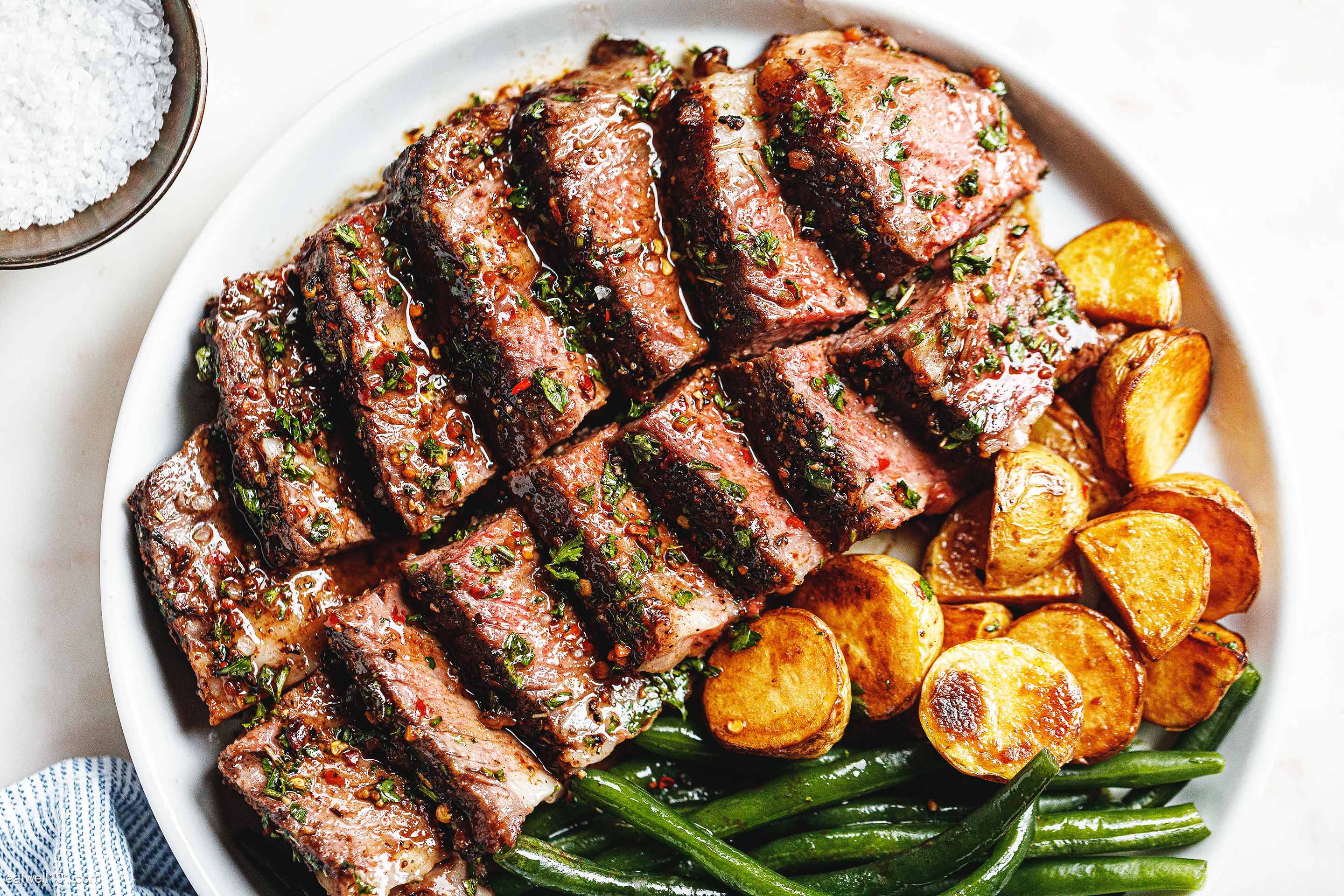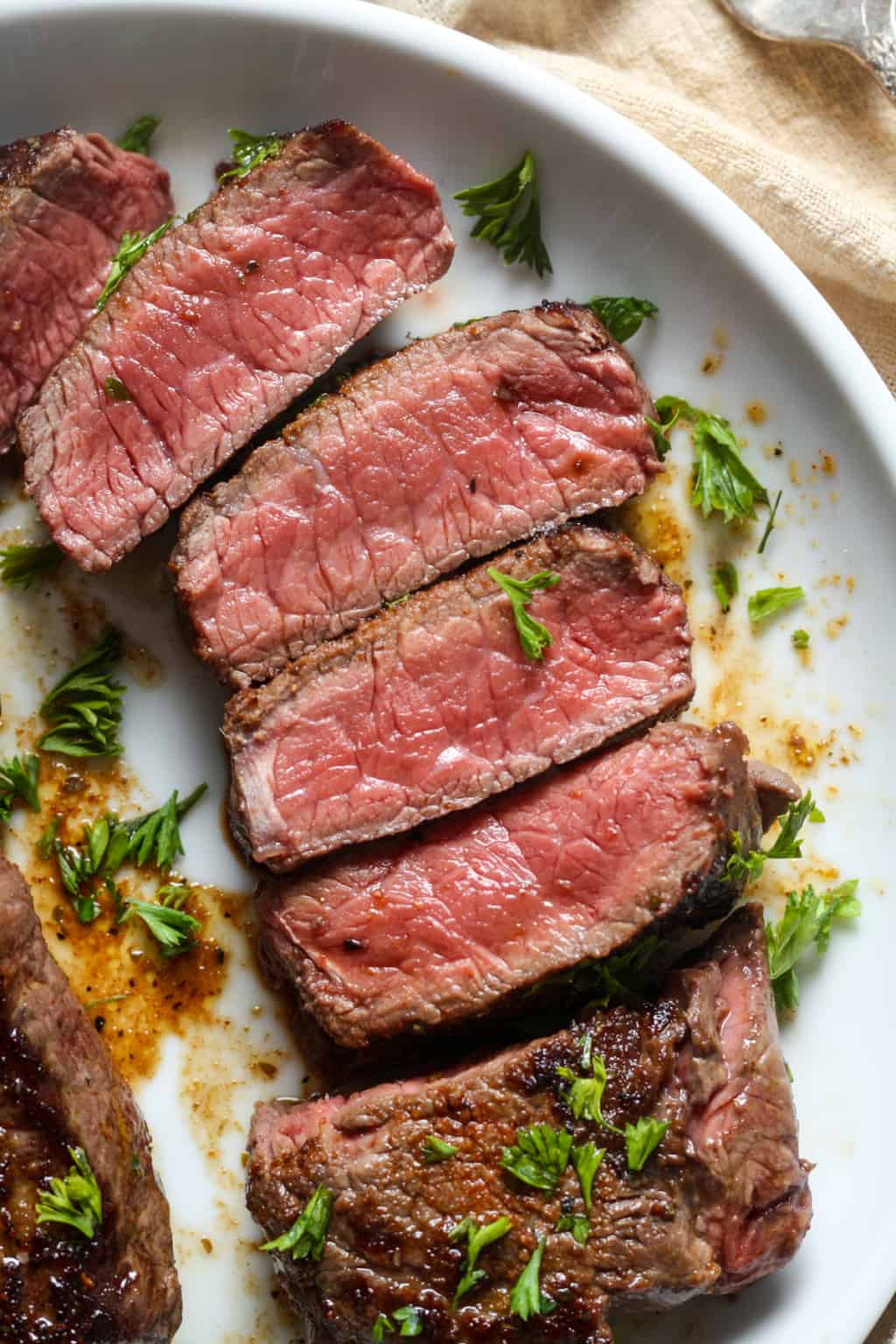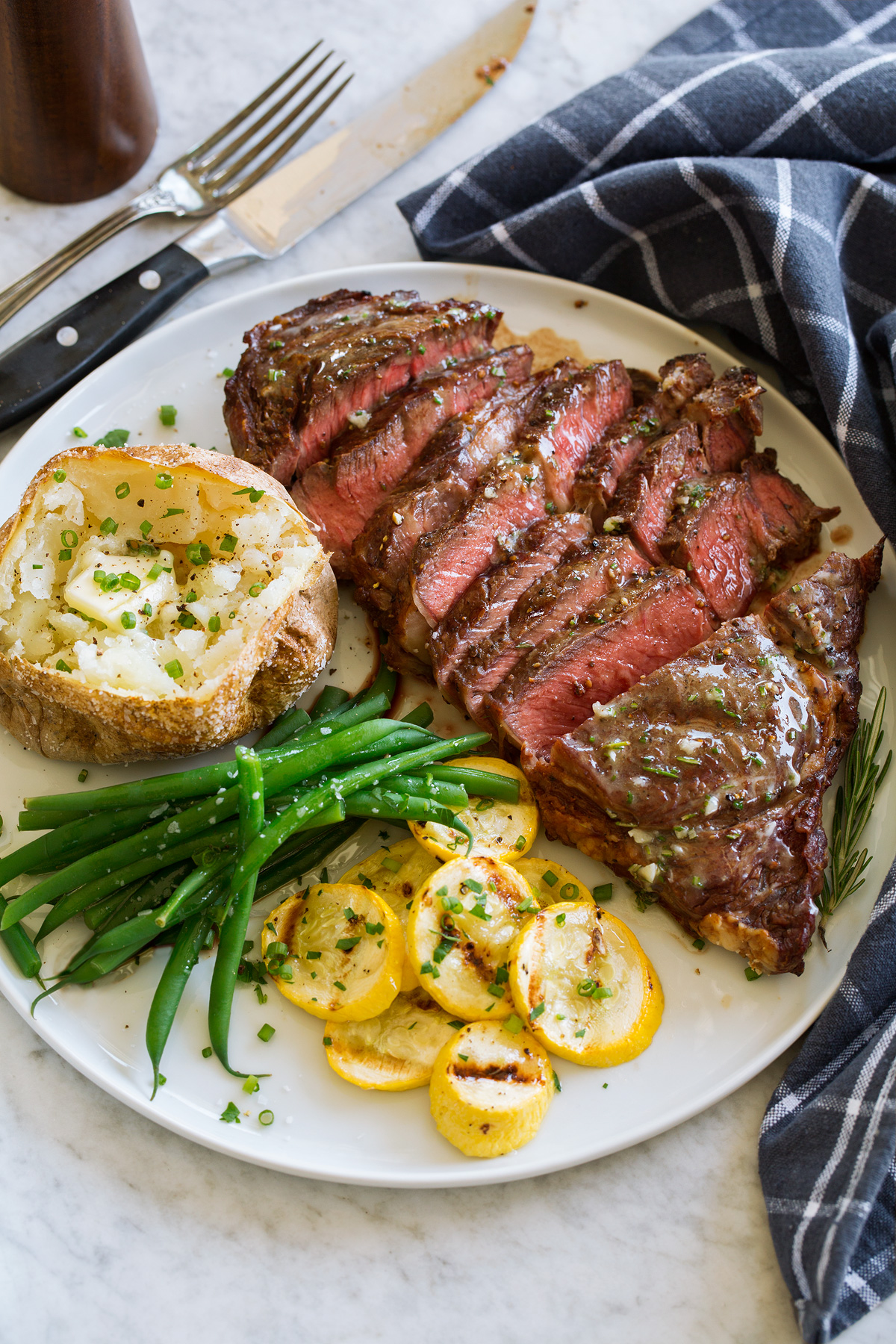For many home cooks, getting a steak just right feels like a big achievement, especially when you are aiming for that specific doneness known as well done. It is, you know, a particular way to enjoy your meat, with a firm texture all the way through and no hint of pink inside. This approach to cooking steak, whether it is something you grill outside, sear quickly on a stove, or roast slowly in the oven, truly offers a straightforward and satisfying meal for any day.
Understanding the exact warmth your steak needs to reach, particularly when you want it to be cooked all the way through, is a bit like knowing a secret handshake for a good outcome. It involves, too it's almost, paying attention to the meat's inner warmth as it cooks, making sure it gets to a point where it is no longer red or pink, but a uniform shade of brownish-gray. This level of cooking, which some people really prefer, means the steak will have a different feel and taste compared to one that is still a little red in the middle.
Knowing about the right steak temperature for well done helps you get a consistent result every single time, which is that, pretty important for anyone who enjoys their steak cooked to this specific preference. It is about making sure each bite offers the texture and appearance you are hoping for, giving you a truly pleasant eating experience. You can, in fact, make a really good well-done steak right at home.
- Kim Trailblazer
- Q Link Wireless Free Phones
- Richard Goodall Manchester
- Doge Quest
- Catherine Falk Net Worth
Table of Contents
- What Does "Well Done" Really Mean for Steak Temperature?
- How Do Different Cooking Methods Affect Steak Temperature for Well Done?
- Choosing the Right Steak Cut for a Well-Done Temperature
- Are Sirloin Tips Good for a Well-Done Steak Temperature?
- Getting That Perfect Crust with a Well-Done Temperature
- Why Consider Reverse Searing for Well-Done Steak Temperature?
- Everyday Meals and Your Well-Done Steak Temperature
What Does "Well Done" Really Mean for Steak Temperature?
When someone asks for a steak that is well done, they are generally looking for a piece of meat that has been cooked so thoroughly that it shows no signs of pinkness or redness inside, even a little bit. This means the internal warmth of the steak needs to reach a particular point, usually somewhere around 160 to 170 degrees Fahrenheit, before you let it rest. During the resting period, the warmth will actually continue to rise slightly, often reaching 170 degrees Fahrenheit or even a bit more, so, that is something to keep in mind.
Achieving this specific steak temperature for well done means the muscle fibers in the meat become quite firm, and the juices that were once flowing freely inside tend to be less present, making for a drier experience compared to less cooked steaks. The color throughout will be a consistent grayish-brown. For many who enjoy their steak this way, the firm texture and the absence of any pink are precisely what they are looking for, offering a feeling of completeness in their meal, you know.
It is important to use a meat thermometer to check the warmth inside the steak when aiming for this specific doneness. Guessing can lead to an outcome that is either not quite cooked enough for a true well-done, or, on the other hand, overcooked to the point of being overly tough and dry. A reliable thermometer takes the guesswork out of the process, ensuring you hit that ideal steak temperature for well done every single time you cook.
How Do Different Cooking Methods Affect Steak Temperature for Well Done?
The way you cook your steak really changes how you approach getting it to a well-done steak temperature. Each method, whether you are using a grill, a hot pan on the stove, or an oven, brings its own set of things to think about when you are aiming for that thoroughly cooked result. For instance, grilling gives the meat a lovely smoky taste and those appealing grill marks, but it also means the outside cooks faster than the inside, so you have to manage the warmth carefully to get the middle to the right doneness without burning the outside, basically.
Searing on a stove top, perhaps in a heavy pan, creates a wonderful, browned outer layer very quickly. This method is great for building flavor on the surface. However, to get the steak temperature for well done all the way through, you might need to finish the steak in the oven after searing it, especially if the piece of meat is a bit thick. This two-step process helps ensure the inside gets to the desired warmth without making the outside too dark or tough, which is that, a common challenge.
Roasting in the oven, by itself, is a gentler way to cook steak, allowing the warmth to spread more evenly throughout the meat. This can be a good choice for thicker cuts when you are trying to reach a higher internal warmth like that for a well-done steak. It gives you more control over the overall cooking process, reducing the chance of having parts of the steak cook too quickly while other parts are still catching up. You can, for example, achieve steakhouse-like outcomes right at home by cooking your steak in the oven, especially when you know the right warmth to target.
Choosing the Right Steak Cut for a Well-Done Temperature
When you are aiming for a well-done steak temperature, the kind of meat you pick can make a difference in how enjoyable the final dish turns out. Some cuts naturally handle longer cooking times and higher internal warmth better than others, still giving you a pleasant experience. For those who are just starting out with cooking steak, or perhaps trying to get that well-done result consistently, cuts like ribeye and strip steak can be quite forgiving. They have a good amount of fat marbled throughout, which helps keep the meat from becoming overly dry as it reaches a higher warmth, so, that is often a good starting point.
These particular cuts, the ribeye and the strip, tend to maintain a better texture even when cooked all the way through. The fat melts and adds flavor, which helps to counteract some of the dryness that can happen when meat is cooked to a well-done steak temperature. While any cut of steak can be cooked to this doneness, some might become tougher or less appealing without that protective fat. It is worth considering the fat content when you are choosing your meat for this specific cooking style, you know.
There are, of course, many different kinds of steak, and knowing which ones are best for the grill, or for pan-searing, or for the oven, can really help you get a great meal. No matter what kind of steak you have, whether it is a flank steak, a porterhouse, or a ribeye, knowing how to season it and cook it to your liking, especially to a well-done steak temperature, is a valuable skill for anyone who enjoys cooking meat at home, as a matter of fact.
Are Sirloin Tips Good for a Well-Done Steak Temperature?
Sirloin tips, a popular choice in places like New England, come from a part of the cow called the bottom sirloin butt. If you buy them as a single piece, they might also be called sirloin flap or flap steak. These cuts are generally leaner than, say, a ribeye, which means they can become a bit tougher if you cook them to a well-done steak temperature without some care. However, they are still a good option for a hearty meal, especially when you know how to prepare them.
To make sirloin tips enjoyable when cooked all the way through, you might want to consider cutting them into smaller pieces before cooking, or perhaps marinating them for a while. This can help to tenderize the meat and add some moisture, making them more pleasant even at a higher internal warmth. The key is to manage the cooking time and warmth very carefully to prevent them from becoming too firm, which is that, a common concern with leaner cuts.
When cooking sirloin tips to a well-done steak temperature, it is especially important to use a thermometer to make sure you hit the right warmth without going too far. Once they reach that desired internal warmth, taking them off the heat right away and letting them rest for a few minutes will help them stay as tender as possible. This little bit of rest allows the juices to settle back into the meat, giving you a better eating experience, you know.
Getting That Perfect Crust with a Well-Done Temperature
Achieving a beautiful, browned crust on your steak while also cooking it to a well-done steak temperature inside can feel like a tricky balancing act. Many people think that cooking a steak all the way through means you have to sacrifice that wonderful outer crispness, but that is not always the case. There are techniques that help you get both a pleasing exterior and a thoroughly cooked interior. One common way is to use a very hot cooking surface, like a grill or a cast-iron pan, to create that initial sear.
When you place a steak on a really hot surface, the outside quickly develops a rich, browned layer, which adds a lot of taste and texture. This initial searing happens fairly quickly. After that, you need a way to get the warmth to the center of the steak without burning the outside. This might involve moving the steak to a cooler part of the grill, or putting it into an oven to finish cooking, which is that, a pretty common method for thicker cuts. This two-stage approach helps you manage the warmth more effectively, ensuring the steak temperature for well done is reached evenly.
Using different cooking methods, like sheet pan steaks or the reverse searing technique, can also help you get that desired crust while making sure the inside is cooked to your liking. These methods are designed to give you more control over how the warmth spreads through the meat, allowing for a good browning on the outside and a consistent doneness on the inside. It is all about understanding how warmth moves through the meat and using the right tools to guide it, you know.
Why Consider Reverse Searing for Well-Done Steak Temperature?
Reverse searing is a technique that has become very popular for cooking thick cuts of meat, and it is especially helpful when you are aiming for a well-done steak temperature. Instead of searing the steak first and then finishing it, you start by cooking the steak at a low warmth in the oven until it almost reaches your desired internal warmth. Then, you finish it with a quick sear on a very hot surface, like a pan or a grill, to create that lovely browned crust. This method helps prevent the outside from getting too cooked while the inside is still catching up, which is that, a common issue.
For a well-done steak, this means you can gently bring the entire piece of meat up to, say, 160 degrees Fahrenheit in the oven. This slow, gentle cooking helps the warmth spread very evenly through the steak, so you do not end up with parts that are overcooked and parts that are undercooked. Once it is nearly at the well-done steak temperature, you then give it a very quick blast of high warmth on the outside to get that beautiful, crisp crust. This approach gives you both a nice browned exterior and a thoroughly cooked interior that is still as juicy as possible for a well-done steak, you know.
The benefit of reverse searing for a well-done steak is that it helps to keep the meat from drying out as much as it might with other methods. By cooking it slowly first, the muscle fibers do not seize up as quickly, allowing the meat to retain more of its natural moisture. This means you can get a well-done steak that is not overly tough or dry, which is that, a really good outcome for many people who enjoy their meat cooked all the way through.
Everyday Meals and Your Well-Done Steak Temperature
Steak does not just have to be for special occasions; it can easily become part of your everyday meals, even when cooked to a well-done steak temperature. Whether you are looking for a quick dinner or something satisfying for lunch, steak can be a versatile ingredient. For instance, a round steak, which is often a more budget-friendly cut, can be cooked to a well-done state and still be quite enjoyable, especially if prepared with recipes that help keep it tender, you know.
You can find many ideas for cooking round steak that make it easy to prepare any night of the week. These recipes often involve slow cooking or braising, which helps to break down the tougher fibers in leaner cuts, making them tender even when they reach a well-done steak temperature. This shows that even cuts that are not typically thought of as "fancy" can be cooked to a higher doneness and still be a very satisfying part of your meal, so, that is something to keep in mind.
Steak can also turn something as simple as a salad into a really filling meal, perfect for either midday or evening. When you are adding steak to a salad, cooking it to a well-done steak temperature means it will have a firm texture that holds up well with other ingredients. You can slice it thinly and mix it with fresh greens and other toppings for a meal that feels both light and substantial. There are, in fact, many easy recipes for steak salads that you can try at home, making it simple to enjoy steak in new ways.
Related Resources:
Detail Author:
- Name : Shaniya Luettgen
- Username : myron81
- Email : purdy.kyra@reichel.com
- Birthdate : 1978-03-03
- Address : 35096 Rodrigo Corners East Nettiefort, FL 52644
- Phone : 320.330.4886
- Company : Bradtke, Bahringer and Hill
- Job : Bookbinder
- Bio : Voluptatem voluptatem est nam numquam explicabo vel maxime. Voluptatem vitae non incidunt quisquam est optio. Nulla provident tenetur amet. Excepturi non porro libero quia.
Socials
tiktok:
- url : https://tiktok.com/@magdalen.batz
- username : magdalen.batz
- bio : Non nemo enim natus quos labore unde.
- followers : 6809
- following : 245
facebook:
- url : https://facebook.com/magdalen8334
- username : magdalen8334
- bio : Eos molestias labore deleniti illo. Quia aut consectetur et ad a quisquam ut.
- followers : 1941
- following : 1027
instagram:
- url : https://instagram.com/magdalen_batz
- username : magdalen_batz
- bio : Debitis et illo nobis nisi. Aut eligendi voluptas est necessitatibus. Animi eveniet aut vero.
- followers : 1735
- following : 283
twitter:
- url : https://twitter.com/batzm
- username : batzm
- bio : Quasi repellat non saepe ut animi. Et non beatae et.
- followers : 3411
- following : 2739
linkedin:
- url : https://linkedin.com/in/batzm
- username : batzm
- bio : Quis ad quae provident.
- followers : 883
- following : 1520


